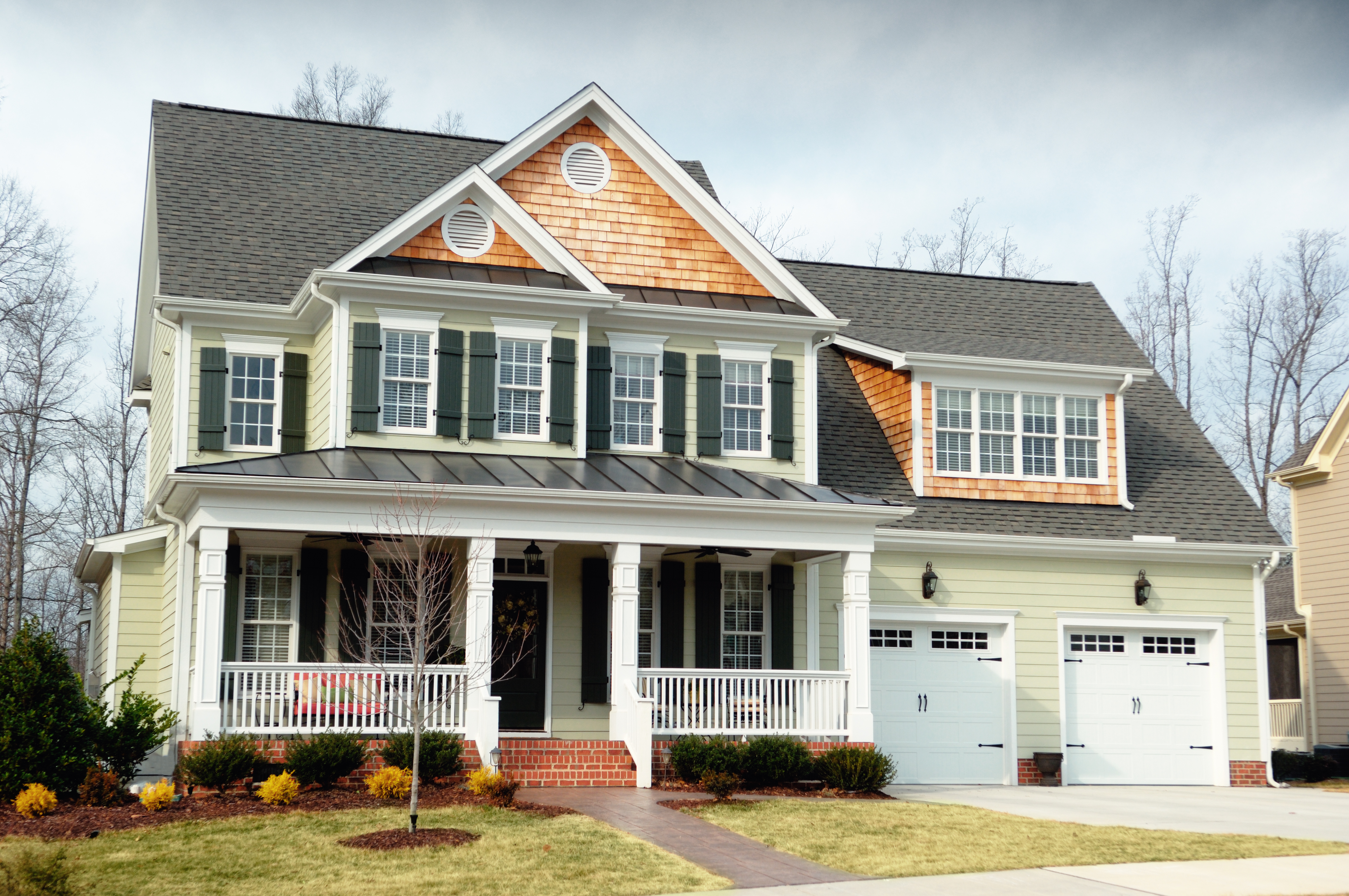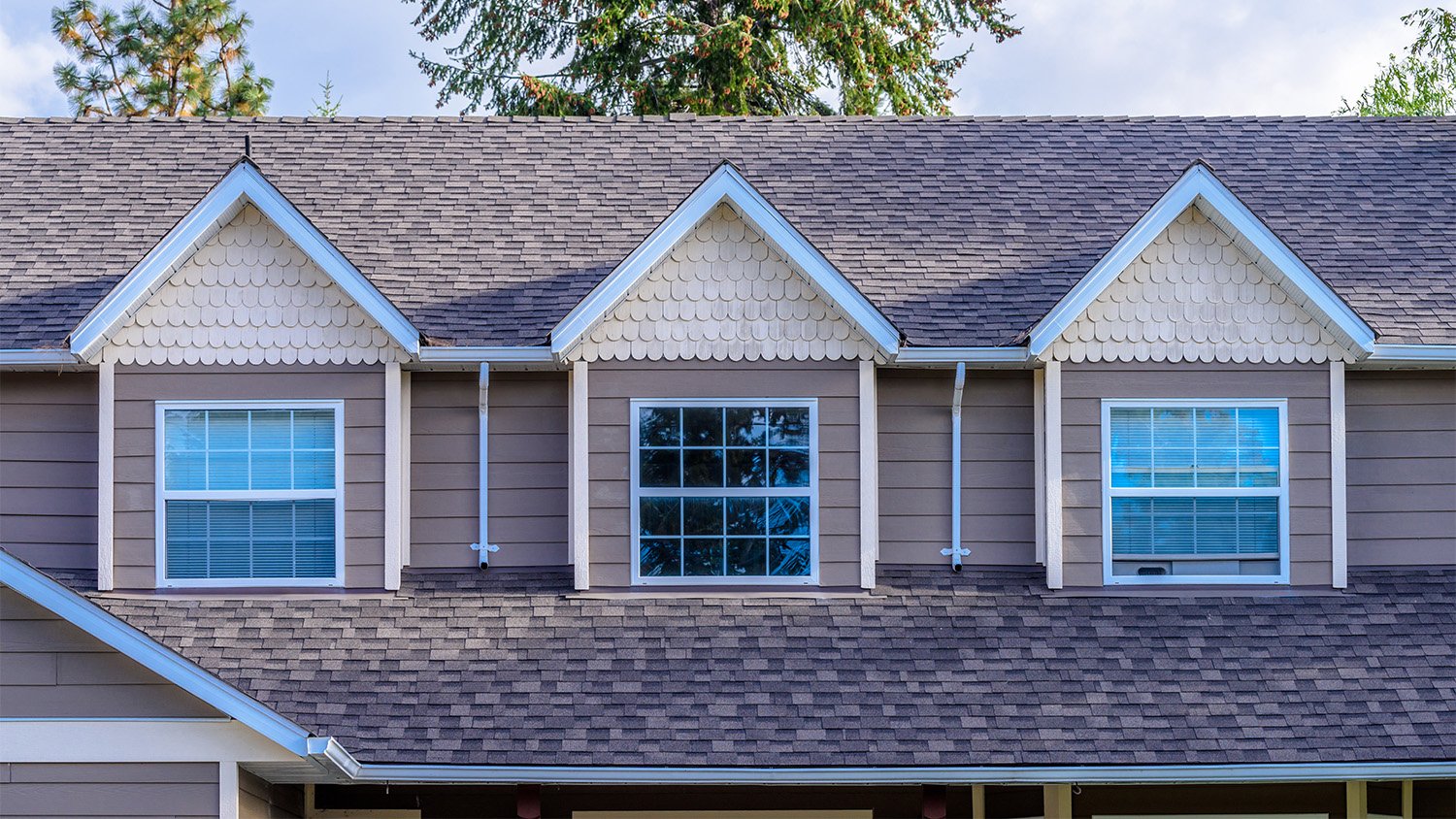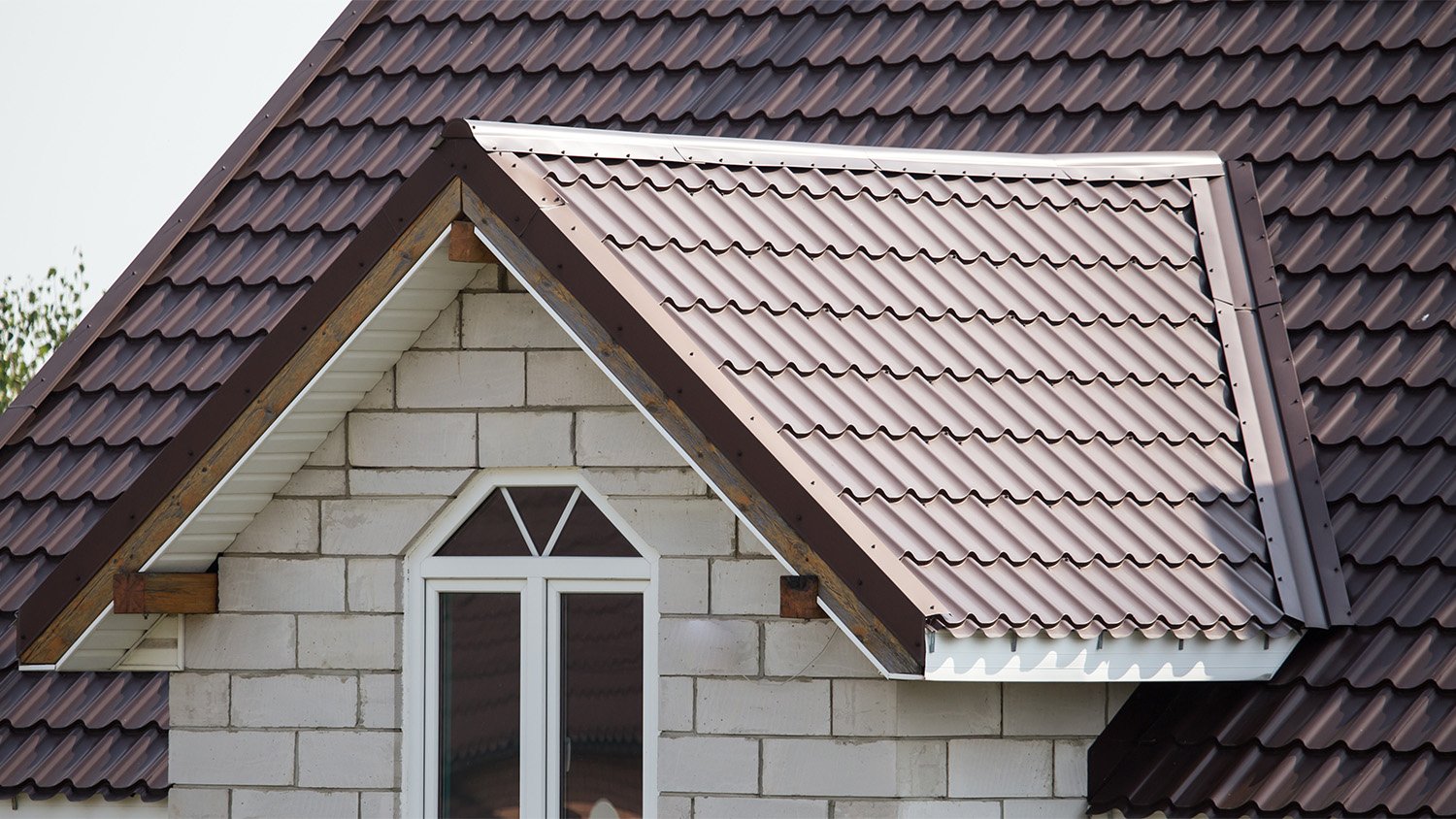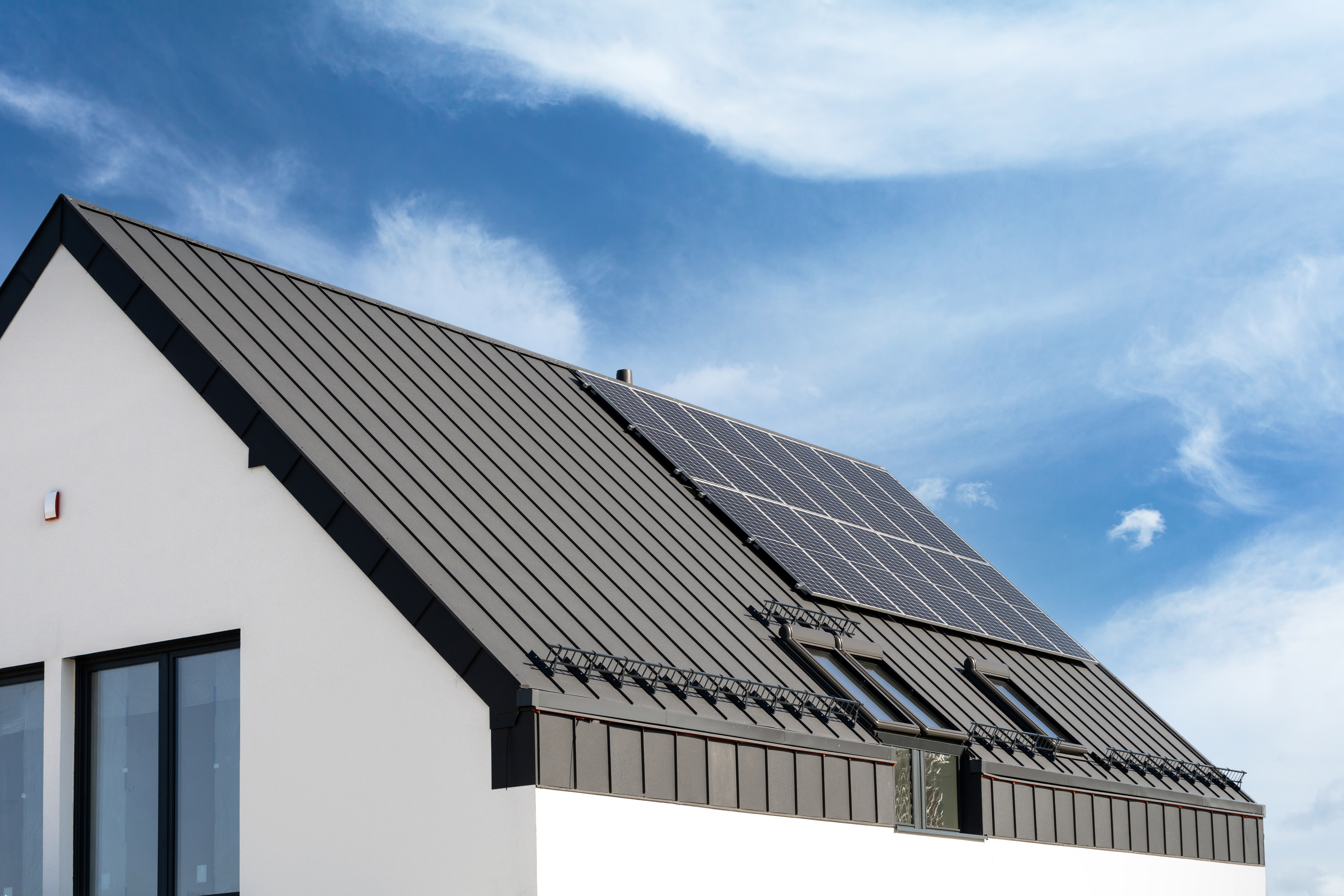
Dealing with a visibly damaged roof or leak? Learn about roof repair costs in Columbus to see how much you’ll need to budget for a permanent solution.
An energy-efficient roof might just make all the difference in your home energy costs


Energy-efficient roofs can reduce AC demand by as much as 10–15%
A green roof can be 30–40 degrees cooler than a conventional roof
A cool roof coating can be applied to some roofs to enhance their energy efficiency
Solar shingles, metal roofs, and asphalt shingles may qualify you for federal tax credits
Whether it’s raining, the sun is scorching, or it’s a winter wonderland outside, you depend on your roof to keep your home comfortable and dry. However, an old or energy-inefficient roof can hike up energy prices and make it hard to keep temperatures under control. If you’re worried about your roof’s efficiency—or are weighing the benefits of installing a brand new roof—we’ve rounded up some of the biggest benefits of an energy-efficient roof.
Saving money on your bills is a perk that might make investing in an energy-efficient roof worth your while. Your home won’t need to work as hard to regulate indoor temperatures, reducing the need to use your heating, ventilation, and air conditioning (HVAC) system as frequently.
According to ENERGY STAR, investing in an ENERGY STAR-certified roof is so energy-efficient that you can reduce your home’s peak cooling demand by as much as 10 to 15%.

Believe it or not, your roof plays an important role in temperature control inside your home. The hot summer sun can be brutal, and your roof takes the brunt of it like a bad sunburn on the hottest of days.
Shingles and other roofing materials contribute to the SPF factor of your home. A higher SPF rating means that more of the sun’s rays are reflected away from your home rather than absorbed. This solar reflectance is what makes your new roof cooler than traditional roofs.
To put that into perspective, ENERGY STAR-certified products can reduce the surface temperature of your roof by as much as 50 degrees Fahrenheit. Your air conditioner won’t need to work as hard to maintain indoor temperatures if your roof isn’t scorched by the blazing sun.
You may think of replacement windows, door weather strips, and proper insulation of windows and doors as the major players in the energy efficiency game. A proper roofing system that includes the correct insulation and ventilation, however, also can have a significant impact on the efficiency and climate control of your home.
For one, a good ventilation system allows hot air to circulate out of your house. Hot, moist air rises, and the last thing you want is to have moisture trapped in the attic and insulation of your home, where mold and mildew can build up. Plus, all that buildup can bake your roof from the inside, weakening the material.
In the winter, the opposite is true of ventilation; the last thing you want is an airy, ventilated roof. You want to keep your home comfortably warm during the colder times of the year. And, because heat rises, your roof needs the right amount of insulation to keep the warmth indoors. An energy-efficient roof is better insulated than conventional roofing, helping to prevent your heating system from working overtime to compensate for heat loss.

When winter comes, dealing with the ice and snow can be a major pain! But having to deal with ice dams on an insufficient roof is a whole different matter. Ice dams form when heat escapes from the interior of a home through the roof. Ice and snow at the center of the roof begin to melt, and the resulting water drips down toward the eaves, where it refreezes as it contacts the snow and ice collecting at the edges.
An ice dam can weigh down components of your roof or gutter system and damage it. They may also cause any water that does not refreeze to seep through the roof if you don’t have a local pro remove the ice dam.
Preventing a problem is always easier than fixing it, and an efficient roofing system will save you money in costly damages from an old and inefficient roof. Energy-efficient metal roofs with a waterproof coating offer the best prevention against ice dams. These roofs allow snow and ice to slide off more easily.
Of the different energy-efficient roofing options (more on these in a second!), solar roofs, energy-efficient metal, and asphalt roofs may just make your brand-new roof eligible for receiving federal tax credits.
According to ENERGY STAR, a government-supported program dedicated to promoting energy efficiency, tax credits for metal and asphalt roofs include 10% of the cost of your roof or up to $500, installation not included.
To qualify, your metal or asphalt roof must:
Be ENERGY STAR-certified
Have pigmented coatings (if metal), or
Have cooling granules that reduce heat gain (if asphalt)
Solar roofing is eligible for even more tax credit savings because solar roofing technology uses solar energy and is, therefore, a form of renewable energy. The Office of Energy Efficiency and Renewable Energy states that any solar roof systems installed between now and 2022 will receive a 26% tax credit, and systems installed in 2023 will receive a 22% tax credit.
Now that you know the benefits of energy-efficient roofs, let’s dive into the different types of these roofs so you can make the best decision for your family.
Cool roofs are reflective, making them an energy-efficient and unique roofing option. Instead, you can coat your existing roof with a cool roof coating, which is usually reflective and light-colored or white. The reflective pigments in cool roof coatings help your roof reflect sunlight, serve as effective protection from UV rays, and provide slight water protection.
On the downside, cool roofing is best for warmer climates due to its reflective properties. It’s great for keeping out the heat, but not so great for keeping out the cold. You won’t have that same level of insulation as you would an asphalt or slate roof, either, so if you live in the cooler part of the U.S., you may want to choose one of the other options.
Asphalt shingles require little maintenance. However, you might have to hire a local roofer to repair shingles later down the line, as this roofing type is more prone to wind and storm damage and mildew. The efficiency of asphalt shingles depends greatly on the kind of coating used. You’ll want coated granules for your asphalt shingles, as this special coating increases how reflective the asphalt is.
Another durable option is shake roofing. Shakes are made from wood, with cedar as the main material choice for the job. Shake roofing is durable and can take on the demands of windy or stormy climates. The downside to wood shingles is that termites, mold, and leaks can cause major damage, and this material is also the most flammable.
Metal roofs cost less than shingles, last up to four times longer, and also can be made energy-efficient if you apply cool roof coating. On the other hand, an unpainted metal roof won’t provide the kind of thermal insulation that you need for climates that have weather below freezing. For this reason, only consider a metal roof if you live in a warm climate. Metal roofing is also easy to install, saving you money on installation.
You can choose a few different options for your energy-efficient tile roof. Whether you opt for warm clay, a sleek, slate gray, or the more modern and industrial concrete, your home will be sure to reap the benefits of having an energy-efficient roof. Be sure to choose a tile that has been treated with cool roof coating to make your roof even more efficient.
Green roofing is exactly as it sounds: a roof with plants. Whether you go all out and have a fully-covered vegetative layer installed onto your roof or choose a more modest section to cover, you can’t go wrong. Green roof systems are installed onto existing roofs and offer water protection, drainage, shade, and insulation to your home. And, according to the EPA, green roofs can be as much as 30 to 40 degrees cooler than a conventional roof.
A green roof does tend to cost more overall and requires more maintenance than the other options.
Solar shingles have a high upfront cost, but these shingles also generate renewable energy, saving you even more money in the long run than the other roofing options. Solar shingles are like solar panels—only they’re installed just like a regular roof. Because of this, you’ll get a classic, stylish look with the benefits of energy efficiency.
From average costs to expert advice, get all the answers you need to get your job done.

Dealing with a visibly damaged roof or leak? Learn about roof repair costs in Columbus to see how much you’ll need to budget for a permanent solution.

Learn about roof replacement costs in Columbus and what factors are at play to budget accurately and make sure you’re getting a fair price.

A metal roof can defend your home against Ohio’s varying weather conditions. Learn how much a metal roof costs in Columbus, OH.

Sharpen your skills and smooth your cuts with this DIY guide to cutting metal roofing. We cover everything from measurements and safety gear to which tools will give you the cleanest cut.

Follow these four straightforward steps to install hurricane ties. The number of ties and the demand load will impact the project.

With so many different types of roofs, it’s important to know the pros and cons of your roof’s style. Learn about 14 common roof types and how they measure up.